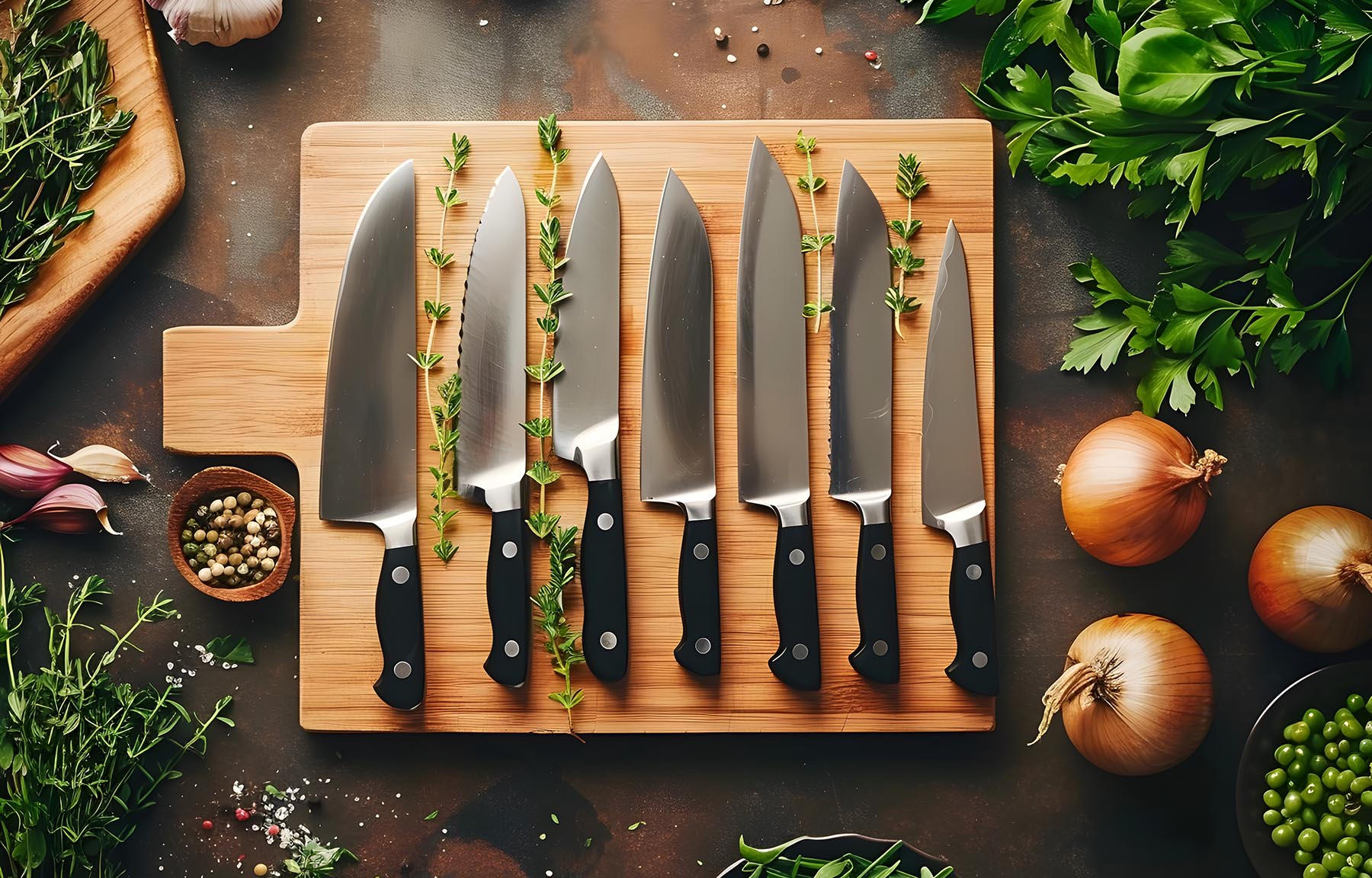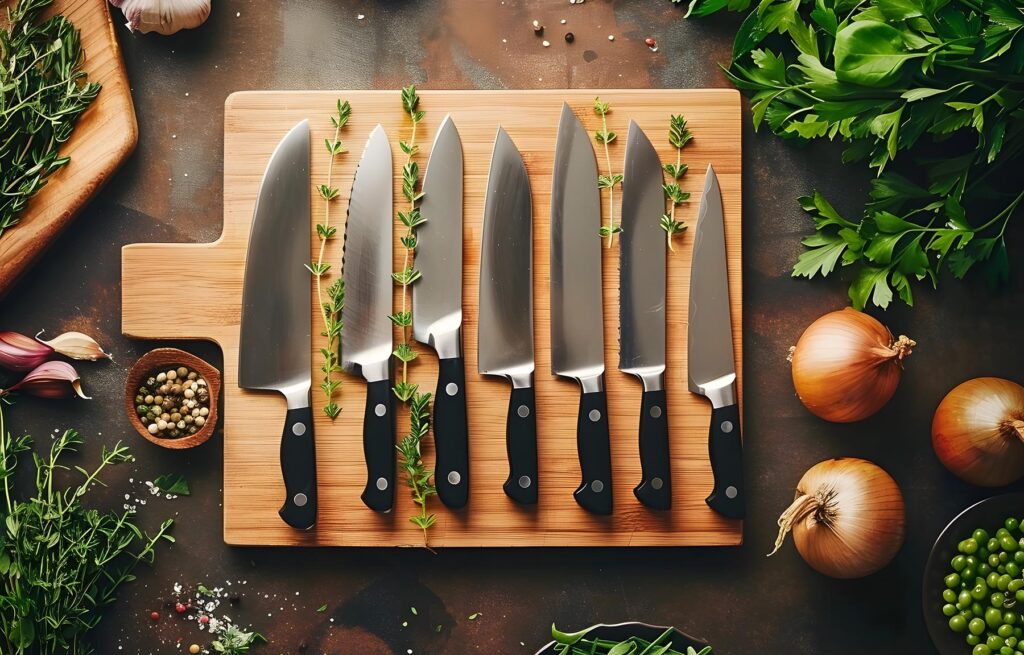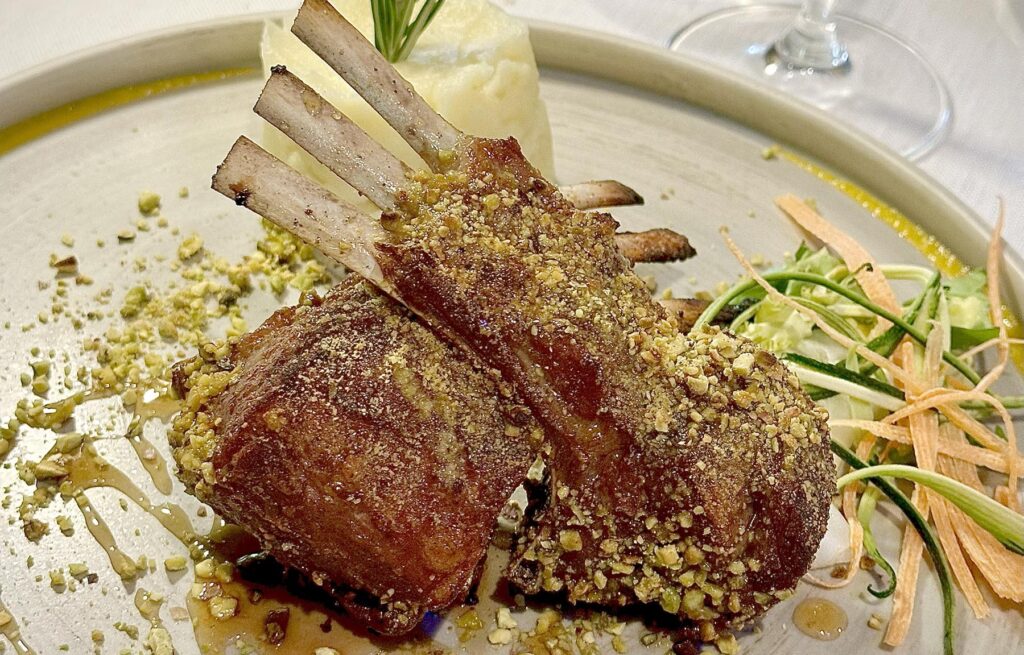
The history of kitchen knives dates back thousands of years, evolving alongside human civilization. Early knives were crafted from stone, obsidian, and bone, and used for hunting and food preparation. As metallurgy advanced around 3000 BCE, ancient cultures such as the Egyptians, Mesopotamians, and Chinese began forging knives from copper and bronze. These early metal knives were prized for their durability and efficiency, though they were still rudimentary by modern standards. The Iron Age brought further improvements as iron, and later steel knives, became stronger, sharper, and more accessible.
During the Middle Ages, knife craftsmanship flourished in Europe and Asia, with regions like Solingen, Germany, and Sakai, Japan, becoming renowned for their blade-making expertise. Japanese artisans, for instance, developed specialized kitchen knives like the deba and yanagiba, tailored to precise cutting techniques in traditional Japanese cuisine. Industrialization revolutionized knife production in the 19th and 20th centuries, making them widely available and affordable. Companies like Sabatier in France and Wüsthof in Germany popularized high-quality forged knives, while stainless steel’s invention in the early 20th century offered a rust-resistant alternative to carbon steel.
Today, kitchen knives continue to combine traditional craftsmanship with modern technology, incorporating advanced materials like Damascus steel, ceramics, and enhanced ergonomic designs. They remain indispensable tools in kitchens worldwide, reflecting a rich history of innovation and cultural influence.
What defines a “good” kitchen knife?
A good kitchen knife is defined by its balance of sharpness, durability, comfort, and design. The blade should be made of high-quality materials like carbon steel or advanced alloys. These materials maintain sharp edges longer, resist corrosion, and provide precision cuts. The blade’s edge is crucial; a sharp and evenly honed edge reduces the effort needed to slice, dice, or chop and ensures safety by reducing the tendency to slip. A full tang construction, where the blade extends the length of the handle, offers improved balance and durability. Ergonomics play a significant role too—the handle should be comfortable to grip, secure, and made from durable materials like wood, plastic composites, or rubberized textures to avoid slipping during use.
What defines a “bad” kitchen knife?
A bad kitchen knife often skimp on quality materials, leading to quicker dulling, rust, and an uneven blade edge. These knives are usually made with low-grade stainless steel, which lacks the hardness to retain sharpness for extended periods. Poorly constructed handles—either overly bulky or too slim—can cause discomfort or strain during prolonged use. Inadequate balance between the blade and handle can make the knife feel unwieldy, reducing precision and increasing the risk of accidents. Additionally, cheaply made knives may lack sufficient weight, compromising the control needed for efficient cutting. Over time, these flaws make cooking more labor-intensive and less enjoyable.
Looking to upgrade your kitchen tools? Browse our selection of artisan-crafted precision knives.
What are your favorite kitchen knives? Let us know in the comments!




